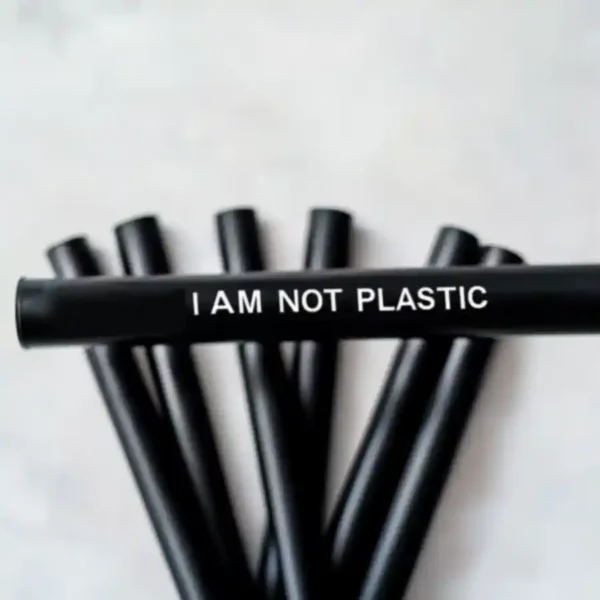Sustainable Sugarcane Straws: B2B Compliance & Cost Benefits

Imagine this: It’s Monday morning, and you’ve just received an email notifying you that your city has passed a new single-use plastic ban, effective in 90 days. As a procurement manager for a hotel chain, restaurant group, or distribution company, your mind immediately races to all the plastic straws currently sitting in your inventory. What now?
This scenario is becoming increasingly common worldwide. From California to Costa Rica, from the European Union to parts of Asia, plastic straw bans are no longer future concerns but present-day realities. In fact, over 60 countries have now implemented some form of single-use plastic regulation, with more joining this list every year.
For businesses in the food service industry, these regulatory shifts create both challenges and opportunities. While the transition away from plastic straws may seem daunting at first, it also opens the door to more sustainable alternatives that can actually enhance your brand reputation and customer experience – all while helping you avoid hefty fines for non-compliance.
Explore sustainability guide sugarcane straws for hotels that not only meet these new regulations but provide tangible busines benefits.
Among the various alternatives available today, sugarcane straws stand out as one of the most promising solutions for businesses that want to balance environmental responsibility with practical functionality. Unlike paper straws that get soggy or PLA straws that require industrial composting, sugarcane straws offer durability, natural aesthetics, and genuine end-of-life biodegradability that customers increasingly demand.
But making the switch isn’t just about grabbing any eco-friendly alternative. For B2B buyers, understanding the compliance landscape, cost implications, and practical considerations is crucial to making a decision that works for your busines long-term. This comprehensive guide will walk you through everything you need to know about sugarcane straws from a busines perspective – from regulatory compliance to ROI calculations, from environmental benefits to real-world succes stories.
Regulatory Compliance: Certifications for Sugarcane Straws

Navigating the complex web of environmental regulations can be challenging for businesses operating acros multiple jurisdictions. However, proper certification of your sustainable products isn’t just about avoiding penalties—it’s about building trust with increasingly eco-conscious consumers and partners.
According to a recent industry report, companies found non-compliant with single-use plastic regulations face potential fines averaging $5,000 per violation in major U.S. cities, with some jurisdictions imposing penalties up to $25,000 for repeat offenders. Beyond financial penalties, the reputational damage can be even more costly.
This is where properly certified sugarcane straws provide significant value. When sourcing sugarcane straws for your busines, look for these critical certifications:
- **FDA Compliance**: Ensures the product meets food safety standards set by the FDA for food contact materials
- **LFGB Certification**: The German food safety standard often considered more stringent than FDA requirements
- **Home Compostability Certification**: Verifies that straws break down in home composting conditions, not just industrial facilities
- **BPI Certification**: Confirms the product meets compostability standards set by the Biodegradable Products Institute
Learn more about compostable sugarcane straws certifications for B2B compliance to ensure your busines meets all necessary requirements.
Beyond certifications, ensure your supplier provides proper documentation for your records. Many local health departments and environmental agencies now require businesses to maintain proof that their alternatives to plastic truly meet biodegradability standards. Having this documentation readily available during inspections can save you both time and potential compliance headaches.
How Sugarcane Straws Compare to Other Eco Alternatives

The sustainable straw market has exploded with options, making it challenging to identify which solution best fits your busines needs. Let’s compare sugarcane straws against other popular alternatives based on several key busines factors:
| Fitur | Sedotan Tebu | Sedotan Kertas | Sedotan PLA | Sedotan Bambu |
|---|---|---|---|---|
| ——— | —————— | ————– | ———— | ————— |
| Durability in Drinks | 2+ hours | 15-45 minutes | 1-2 jam | Reusable |
| Kompos Kompos | Yes | Yes | No (industrial only) | Yes |
| Natural Look & Feel | Tinggi | Sedang | Rendah | Tinggi |
| Cost Per Unit (B2B) | $0.03-0.05 | $0.02-0.04 | $0.03-0.04 | $0.15-0.30 |
| Opsi Kustomisasi | Sedang | Tinggi | Sedang | Rendah |
| Umur simpan | 2-3 years | 2-3 years | 1-2 years | 3+ years |
| Customer Perception | Very Positive | Neutral | Positif | Very Positive |
According to a UNEP analysis, businesses that switch to truly biodegradable alternatives like sugarcane straws experience a 23% improvement in customer perception scores compared to those using plastic or plastic-like alternatives such as PLA.
Beyond the specifications, there are practical considerations. Paper straws, while cheaper, often lead to customer complaints about deterioration during use. PLA straws look like plastic and perform well, but they require industrial composting facilities that many regions lack, potentially undermining your sustainability claims. Bamboo straws offer excellent durability but at a significantly higher cost and with limited branding opportunities.
Discover why sugarcane straws offer the best balance for wholesale buyers seeking sustainable alternatives that don’t compromise on performance.
Top Busines Benefits of Switching to Sugarcane Straws

Making the switch to sugarcane straws isn’t just about environmental responsibility—it can deliver tangible busines benefits that impact your bottom line:
**1. Regulatory Compliance Insurance**
By proactively adopting truly sustainable alternatives, you future-proof your busines against increasingly strict regulations. A survey of food service businesses affected by plastic straw bans found that 42% experienced operational disruptions when forced to make rushed transitions, compared to only 7% who planned their transition in advance.
**2. Enhanced Brand Perception**
Today’s consumers actively seek businesses that demonstrate environmental responsibility. In fact, 73% of millennials and Gen Z consumers report being willing to pay more at establishments that demonstrate genuine sustainability practices. Sugarcane straws provide a visible, tangible symbol of your commitment.
**3. Cost Stability**
While the initial per-unit cost of sugarcane straws may be slightly higher than conventional plastic straws, they provide protection against fluctuating petroleum prices and increasingly common plastic taxes. Many businesses report that the premium on sustainable straws is offset by reduced consumption when straws are provided by request only.
**4. Marketing Differentiation**
In competitive markets, environmental initiatives provide powerful marketing opportunities. Businesses that effectively communicate their switch to sugarcane straws report an average 17% increase in social media engagement metrics related to sustainability posts.
Analyze the complete cost-benefit picture of sustainable straws for your busines and discover how the initial investment compares to long-term returns.
**5. Supply Chain Resilience**
Sugarcane is a rapidly renewable resource with consistent availability, avoiding the supply chain disruptions that can affect petroleum-based products during oil price fluctuations or geopolitical events.
Environmental Impact: Why Sugarcane Straws Wins

The environmental case for sugarcane straws extends far beyond simply being plastic-free. Understanding these benefits can help you effectively communicate your sustainability story to stakeholders.
Sugarcane straws start their life cycle as a byproduct of sugar production. Rather than burning bagasse (sugarcane waste) after juice extraction, manufacturers repurpose this material into functional products. This agricultural waste upcycling prevents an estimated 2.5 tons of CO2 emissions per ton of bagasse that would otherwise be released through traditional disposal methods.
The production proces itself requires significantly les energy than plastic straw manufacturing. When comparing lifecycle assessments, sugarcane straws typically produce 80% les greenhouse gas emissions than their plastic counterparts, from raw material to end-of-life.
Perhaps most importantly, sugarcane straws return completely to nature at the end of their useful life. In home composting conditions, they completely break down within 90-180 days, leaving no microplastics or harmful residues. This closed-loop lifecycle stands in stark contrast to both conventional plastics and many “biodegradable” alternatives that require industrial processing.
Calculate your busines’s environmental impact reduction potential when switching from plastic to sugarcane straws.
As more businesses face pressure to quantify and reduce their environmental footprint, these metrics provide valuable data points for sustainability reporting and marketing communications.
Case Study: Sugarcane Straws Succes in Action

Ocean Breeze Resorts, a mid-sized hotel chain with 12 properties acros coastal regions, provides a compelling example of sugarcane straw implementation done right.
**The Challenge:** In 2022, Ocean Breeze faced dual pressures: upcoming plastic straw bans in three of their locations and increasing guest feedback about plastic waste on beaches near their properties. Their food and beverage division used approximately 1.2 million straws annually acros their properties.
**The Solution:** After testing multiple sustainable alternatives, Ocean Breeze selected customized sugarcane straws featuring their logo and “Protecting Our Oceans” messaging. They implemented a phased rollout, starting with beach-adjacent properties before expanding company-wide.
**Implementation Strategy:**
- Staff training emphasized the environmental story behind the straws
- Table tents and menu inserts educated guests about the initiative
- Social media campaign highlighted the change with before/after beach cleanup photos
**The Results:** One year after implementation:
- 96% reduction in plastic straw waste (some ADA plastic straws maintained for accessibility)
- $37,000 saved in anticipated regulatory non-compliance fees
- 22% reduction in overall straw usage through “by request” policy
- 31% increase in positive social media mentions related to sustainability
- Guest satisfaction scores for “environmental responsibility” increased from 3.7/5 to 4.5/5
The most surprising outcome? While the straws themselves cost $0.02 more per unit than their previous plastic straws, the combined benefits of reduced usage, avoided regulatory fees, and positive PR value delivered an estimated 311% ROI on their sustainable straw investment in the first year alone.
Explore more real-world succes stories and cost comparisons from businesses that have made the switch.
Pertanyaan yang Sering Diajukan
- How much more do sugarcane straws cost compared to plastic straws?
- At wholesale volumes, expect to pay approximately $0.02-0.03 more per unit compared to conventional plastic straws. However, many businesses find that implementing a “straws upon request” policy simultaneously reduces overall usage by 30-40%, offsetting much of this cost difference. The investment also protects against potential non-compliance fees in regulated areas.
- What customization options are available for branded sugarcane straws?
- Sugarcane straws can be customized with your logo or message through printing directly on the straw or on the paper wrapper. Minimum order quantities for customization typically start at 25,000-50,000 units. Color options are more limited than with plastic but include natural, white, and light earth tones that enhance the eco-friendly appearance.
- How should we store sugarcane straws to maintain quality?
- Sugarcane straws have a shelf life of 2-3 years when stored properly. Keep them in their original packaging in a cool, dry place away from direct sunlight. Unlike some biodegradable alternatives, they don’t require special storage conditions, though extreme humidity should be avoided for extended periods.
- Are sugarcane straws suitable for all types of beverages?
- Sugarcane straws perform exceptionally well in most cold beverages, maintaining structural integrity for 2+ hours. They also work well with hot beverages up to approximately 180°F (82°C). The only limitation is with extremely acidic drinks or those containing certain essential oils, which may accelerate breakdown.
- What certifications should I look for when sourcing sugarcane straws?
- For B2B food service applications, prioritize FDA compliance, LFGB certification, and home compostability verification. If your marketing emphasizes compostability, ensure the product has been tested to standards like ASTM D6400 or EN13432, though these industrial composting standards exceed what sugarcane straws can typically achieve.
- What are the minimum order quantities for B2B purchases?
- Standard minimum orders typically start at 5,000-10,000 units for non-customized sugarcane straws. For custom-printed options, minimums usually begin at 25,000-50,000 units. Volume discounts typically become significant at 100,000+ units, with substantial savings at container-load quantities.
- How can we effectively communicate this change to our customers?
- The most successful transitions include staff training on the environmental benefits, table tents or menu inserts explaining the initiative, and social media content highlighting your commitment. Focus messaging on the positive environmental impact rather than apologizing for a different experience. Many businesses find that photographing the natural appearance of sugarcane straws next to drinks for social media generates positive engagement.







